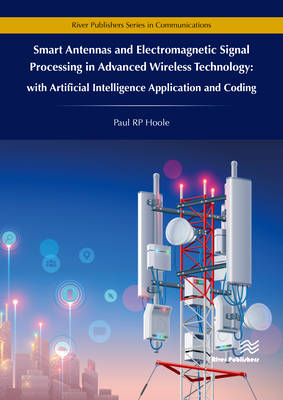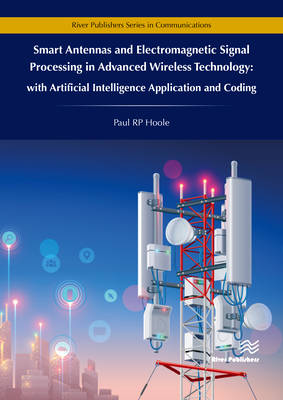
- Retrait gratuit dans votre magasin Club
- 7.000.000 titres dans notre catalogue
- Payer en toute sécurité
- Toujours un magasin près de chez vous
- Retrait gratuit dans votre magasin Club
- 7.000.0000 titres dans notre catalogue
- Payer en toute sécurité
- Toujours un magasin près de chez vous
Smart Antennas and Electromagnetic Signal Processing in Advanced Wireless Technology
with Artificial Intelligence Application and Coding
Paul Rp HooleDescription
The book addresses the current demand for a scientific approach to advanced wireless technology and its future developments, including the current move from 4G to 5G wireless systems (2020), and the future to 6G wireless systems (2030). It gives a clear, succinct, and in-depth presentation of both antennas and what makes antennas powerful, maneuverable, and necessary for advanced wireless technology: adaptive signal processing. Moving towards the increasing demand for a scientific approach to smart antennas, the book presents electromagnetic signal processing techniques to both control the antenna beam and to track the moving station, which is required for effective, fast, dynamic beamforming.
The first part of the book presents a comprehensive description and analysis of basic antenna theory, starting from short dipole antennas to array antennas. This section also includes important concepts related to antenna parameters, electromagnetic wave propagation, the Friis equation, the radar equation and wave reflection and transmission through media.
The second part of the book focuses on smart antennas, commencing from a look at traditional approach to beam forming before getting into the details of smart antennas. Complete derivation and description of the techniques for electromagnetic field signal processing techniques for adaptive beam forming are presented. A novel method for fast, low memory and accurate, maneuverable single beam generation is presented, as well as other methods for beam forming with fewer elements with a simple method for tracking the mobile antenna and station. In this section, for completeness, the use of antenna signal processing for synthetic aperture techniques for imaging are also presented, specifically the Inverse Synthetic Aperture Imaging technique.
The third part of the book presents technological aspects of advanced wireless technology, including Artificial Intelligence driven steerable single beams, the 5G wireless system and the various devices needed to construct the system. While the books? main emphasis is a theoretical understanding of design with the basic tools needed to develop powerful computer code for the smart antennas, it also provides the algorithms or codes in a number of important cases to show how the smart antenna computer codes may be developed using electromagnetic signal processing.
Spécifications
Parties prenantes
- Auteur(s) :
- Editeur:
Contenu
- Nombre de pages :
- 300
- Langue:
- Anglais
- Collection :
Caractéristiques
- EAN:
- 9788770222068
- Date de parution :
- 30-11-20
- Format:
- Livre relié
- Format numérique:
- Genaaid
- Dimensions :
- 156 mm x 234 mm
- Poids :
- 802 g

Les avis
Nous publions uniquement les avis qui respectent les conditions requises. Consultez nos conditions pour les avis.






